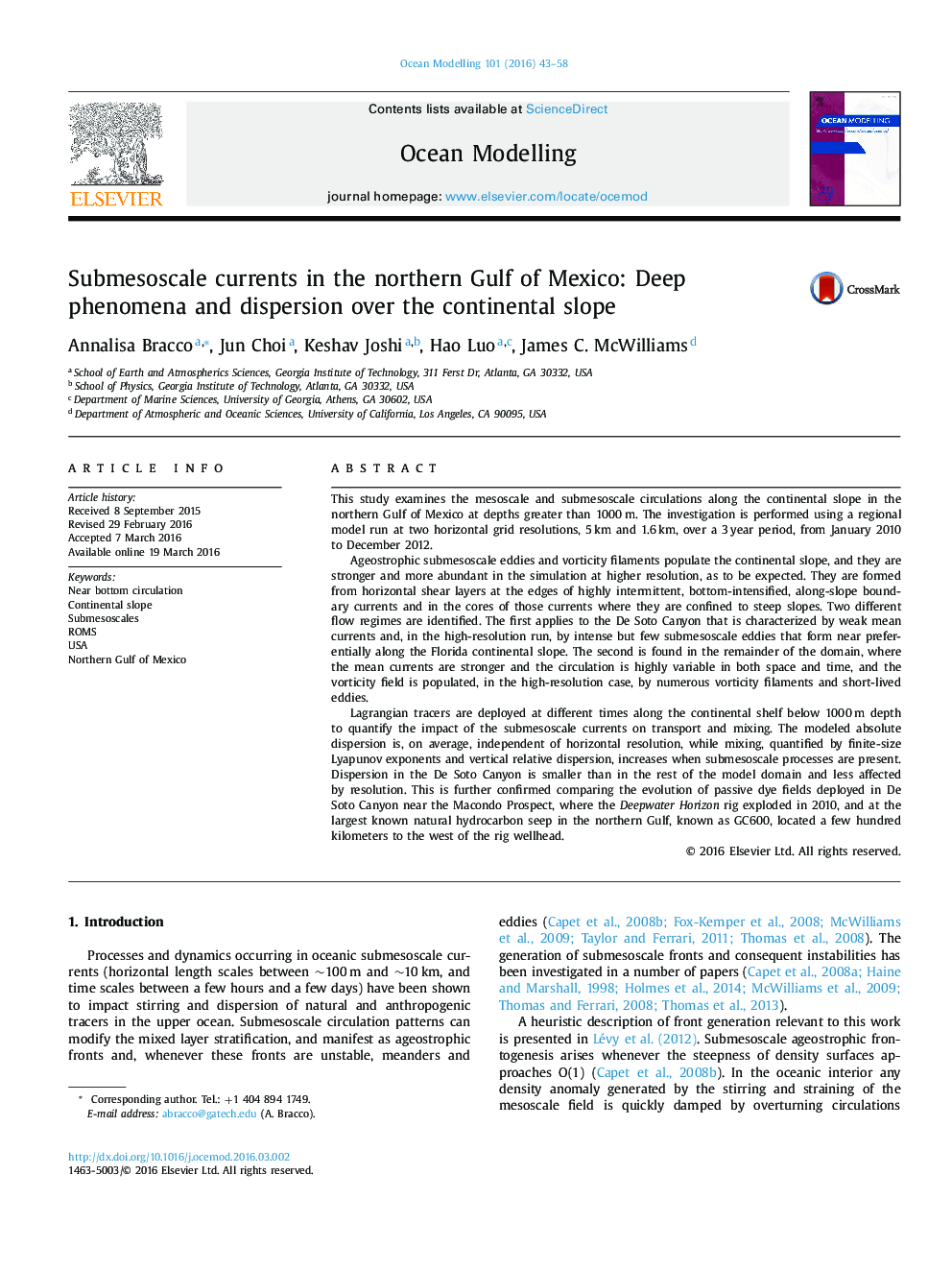| کد مقاله | کد نشریه | سال انتشار | مقاله انگلیسی | نسخه تمام متن |
|---|---|---|---|---|
| 4551962 | 1627748 | 2016 | 16 صفحه PDF | دانلود رایگان |
• The northern Gulf of Mexico circulation is simulated at two horizontal resolutions.
• Mechanisms for submesoscale currents along continental slopes are investigated.
• Submesoscale structures consist of frontal along-slope currents and eddies.
• Submesoscale dynamics impact representation of mixing.
This study examines the mesoscale and submesoscale circulations along the continental slope in the northern Gulf of Mexico at depths greater than 1000 m. The investigation is performed using a regional model run at two horizontal grid resolutions, 5 km and 1.6 km, over a 3 year period, from January 2010 to December 2012.Ageostrophic submesoscale eddies and vorticity filaments populate the continental slope, and they are stronger and more abundant in the simulation at higher resolution, as to be expected. They are formed from horizontal shear layers at the edges of highly intermittent, bottom-intensified, along-slope boundary currents and in the cores of those currents where they are confined to steep slopes. Two different flow regimes are identified. The first applies to the De Soto Canyon that is characterized by weak mean currents and, in the high-resolution run, by intense but few submesoscale eddies that form near preferentially along the Florida continental slope. The second is found in the remainder of the domain, where the mean currents are stronger and the circulation is highly variable in both space and time, and the vorticity field is populated, in the high-resolution case, by numerous vorticity filaments and short-lived eddies.Lagrangian tracers are deployed at different times along the continental shelf below 1000 m depth to quantify the impact of the submesoscale currents on transport and mixing. The modeled absolute dispersion is, on average, independent of horizontal resolution, while mixing, quantified by finite-size Lyapunov exponents and vertical relative dispersion, increases when submesoscale processes are present. Dispersion in the De Soto Canyon is smaller than in the rest of the model domain and less affected by resolution. This is further confirmed comparing the evolution of passive dye fields deployed in De Soto Canyon near the Macondo Prospect, where the Deepwater Horizon rig exploded in 2010, and at the largest known natural hydrocarbon seep in the northern Gulf, known as GC600, located a few hundred kilometers to the west of the rig wellhead.
Journal: Ocean Modelling - Volume 101, May 2016, Pages 43–58
